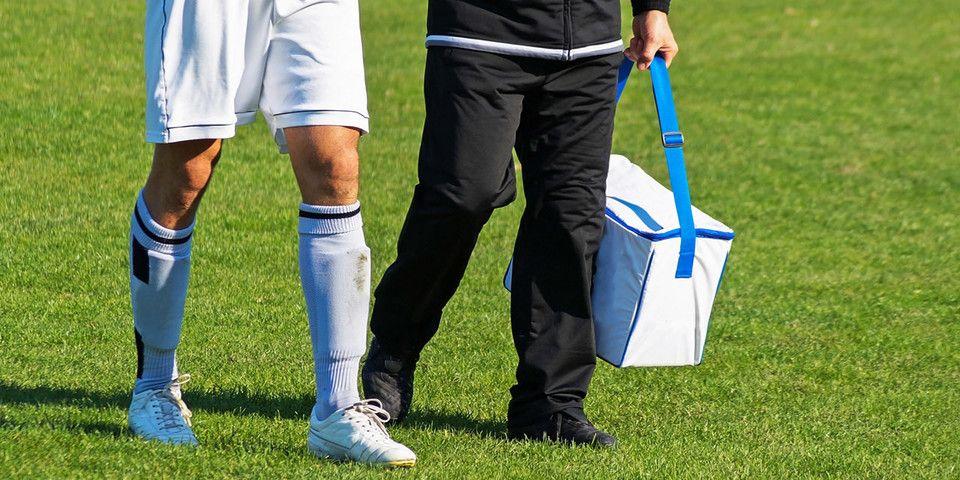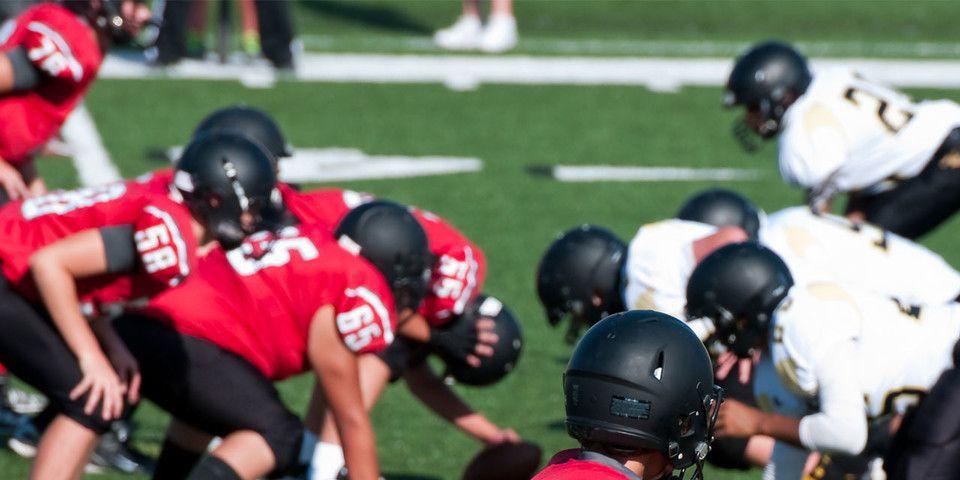Risks and Relief for Heat Exhaustion in Football Players
Learn about the risks and treatments for heat exhaustion in football players and other athletes.
Despite the ongoing rise of safety awareness campaigns student and professional sports, incidents of heat illnesses continue to occur every season. These are preventable conditions requiring only simple steps and practices in order to keep our athletes safe. If you or someone you love is at risk for heat exhaustion in football, Rothman offers the following guide to recognizing, preventing, and relieving the related symptoms and complications that can arise.
How To Spot Heat Exhaustion
While coaches and staffs are aware of the risks hot environments can bring to their teams, they may not have the proper education to recognize the signs/symptoms of heat exhaustion in football players. Heat exhaustion can be brought on by dehydration or salt depletion, and symptoms vary according to the source:
-
In the case of dehydration, the patient experiences decreased perspiration as skin and body temperatures rise. Additional symptoms include excessive thirst, weakness, headache, and sometimes unconsciousness.
-
In the case of salt depletion, nausea and vomiting may occur along with the above symptoms, as well as muscle cramps and dizziness. Electrolyte fluid drinks are often an effective way to prevent this type of heat exhaustion.
(It’s important to note that heat exhaustion is NOT the same thing as heat stroke in athletes. In heat stroke, the athlete’s body cannot regulate its own temperature, which can result in organ system failure. Symptoms include nausea, seizures, and confusion or disorientation, as well as potentially unconsciousness and coma. Heat stroke may occur as a progression from untreated heat exhaustion, or with no preceding signs of heat injury. This is an acute medical emergency and should be treated immediately by professionals. When exertional heat stroke is suspected the first thing coaches should do is call for emergency help.)
Common Risk Factors
Heat exhaustion in football players – as well as other types of heat illness – most often occurs during the first two weeks of preseason practice, and the risk rises along with the temperatures during these events. Athletes who are sickle-cell trait-positive, are taking certain medications, and/or have a previous history of heat illness may be more vulnerable to heat exhaustion.
Prevention Methods and Practices
Heat exhaustion and illness in football or any sport is a preventable condition. Some measures that may help keep your players cool include:
-
Be sure that you and your team know the risk factors and symptoms of heat illnesses, so you may stop a case before it progresses to a serious condition.
-
Ensure you are well hydrated before, during, and after practice and other events. Break for an 8 oz. cup of water or electrolyte drink/water mix every 20 minutes, even if you do not feel thirsty.
-
Get adequate rest before and after practices and competitions.
-
Increase the intensity and duration of your exercise program gradually over a period of 7 to 10 days.
-
Schedule outdoor exercise during the coolest time of day (typically early morning or after sunset). Strongly consider postponing or canceling intense activity during conditions of extreme heat and humidity.
-
The NCAA has a heat acclimatization policy that requires athletes to increase the amount of equipment they wear gradually, with full equipment not allowed until practice day five. This gradual exposure to the elements allows the athletes time to adjust to the environmental conditions and is a good practice for athletes at all levels of play to observe.
How To Treat Heat Exhaustion In Football Players
In the event that preventive methods don’t work and a member of your team begins to display symptoms of heat exhaustion, you should:
-
Move the person to a cool, shaded area.
-
Apply active cooling measures such as immersion in an ice bath, removal of as much clothing as possible, and application of ice packs to the armpits, groin, and neck areas.
-
Remove tight clothing.
-
Continue cooling efforts until medical personnel arrives.
-
Refer to a physician for further medical attention, especially if nausea and vomiting are present.
Prevention is the first line of defense for anyone at risk of heat exhaustion in football or any sport. However, when those methods fail, affected athletes should be to consult their physicians right away. When you need more specialized treatment, the experts at Rothman Orthopaedics can help you decide which options are right for you.
Call Rothman Orthopaedics today to schedule an appointment at 800-321-9999.
Related Specialties
Related Programs
-

Athletic Training- Sport Medicine Outreach
Our Field Athletic Trainers provide direct sports medicine care to youth, high school, college and professional athletes. Rothman AT’s provide athletic training services throughout Southeastern PA to interscholastic high schools, colleges, as well as tournaments and special events.Read More -

Injury Prevention Program
The Injury Prevention Program at the Rothman Orthopaedic Institute is dedicated to the prevention of injuries from athletic participation, particularly youth sports.Read More




